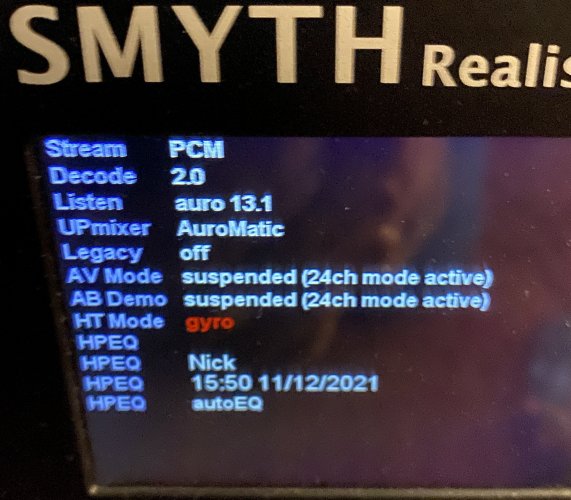dsperber
500+ Head-Fier
- Joined
- Jul 27, 2005
- Posts
- 800
- Likes
- 326
It is really really difficult to conveniently and correctly measure a true physically multi-speaker room PRIR (which is for the room) with only yourself. At least a second person is really needed even if it's a genuine multi-speaker room and once the START button is pushed all you have to do is sit perfectly still and don't breathe through the audio sweeps sent to each speaker while looking straight ahead, and then repeat the process "looking left 30 degrees" and then again "looking right 30 degrees". The required prep of getting the microphones perfectly seated inside your ears is very difficult for you to do yourself. An external human with usable eyes and two hands to see what's going on and make sure it's perfect... that is what you pay someone else to do for you (not to mention get all of the cabling and A16 pre-measurement configuration tweaked properly).
It's kind of somewhat easier to measure the HPEQ (which is for the headphones only), but even so I have always paid someone else (i.e. Lorr) to do it all for me. I want to sit perfectly still once the mics are placed, even if it is much much shorter to "freeze" for an HPEQ measurement cycle.
Most significantly is that while the HPEQ can certainly impact the "tonal quality" and accuracy of how well the resulting PRIR/HPEQ reproduces and duplicates the true "sound" of the room when you then subsequently listen to anything real through A16/heaphones, it is the PRIR that really picks up on the ROOM's physical characteristics and especially speaker angle/distance placements relative to where you were sitting when measured.
But for both PRIR and HPEQ, having those mics correctly inserted in your ears is absolutely critical. Misplaced or ill-aligned mics can produce a PRIR or HPEQ that genuinely fails to produced the "duplicate" spatial sound of where those virtual speakers are located (in "space" outside your head) when you use the A16 and PRIR/HPEQ to play something through your headphones.
My feeling is that of the two it is the PRIR which is more critical than HPEQ in achieving successful reproduction of a listening environment through the A16. Certainly great headphones/amp/DAC help a lot, and a matching perfect HPEQ makes the A16 best using your great equipment possible. And of course the PRIR of a "real physical multi-speaker listening room" is ideal, vs. simulating it with one or two speakers and multiple body rotations and measurements. But most important in my opinion is proper microphone placement in the ears. And try not to move or breathe as it's remarkable how sensitive those mics are in picking up that type of ambient "body and clothing noise".
It's kind of somewhat easier to measure the HPEQ (which is for the headphones only), but even so I have always paid someone else (i.e. Lorr) to do it all for me. I want to sit perfectly still once the mics are placed, even if it is much much shorter to "freeze" for an HPEQ measurement cycle.
Most significantly is that while the HPEQ can certainly impact the "tonal quality" and accuracy of how well the resulting PRIR/HPEQ reproduces and duplicates the true "sound" of the room when you then subsequently listen to anything real through A16/heaphones, it is the PRIR that really picks up on the ROOM's physical characteristics and especially speaker angle/distance placements relative to where you were sitting when measured.
But for both PRIR and HPEQ, having those mics correctly inserted in your ears is absolutely critical. Misplaced or ill-aligned mics can produce a PRIR or HPEQ that genuinely fails to produced the "duplicate" spatial sound of where those virtual speakers are located (in "space" outside your head) when you use the A16 and PRIR/HPEQ to play something through your headphones.
My feeling is that of the two it is the PRIR which is more critical than HPEQ in achieving successful reproduction of a listening environment through the A16. Certainly great headphones/amp/DAC help a lot, and a matching perfect HPEQ makes the A16 best using your great equipment possible. And of course the PRIR of a "real physical multi-speaker listening room" is ideal, vs. simulating it with one or two speakers and multiple body rotations and measurements. But most important in my opinion is proper microphone placement in the ears. And try not to move or breathe as it's remarkable how sensitive those mics are in picking up that type of ambient "body and clothing noise".
Last edited:

















